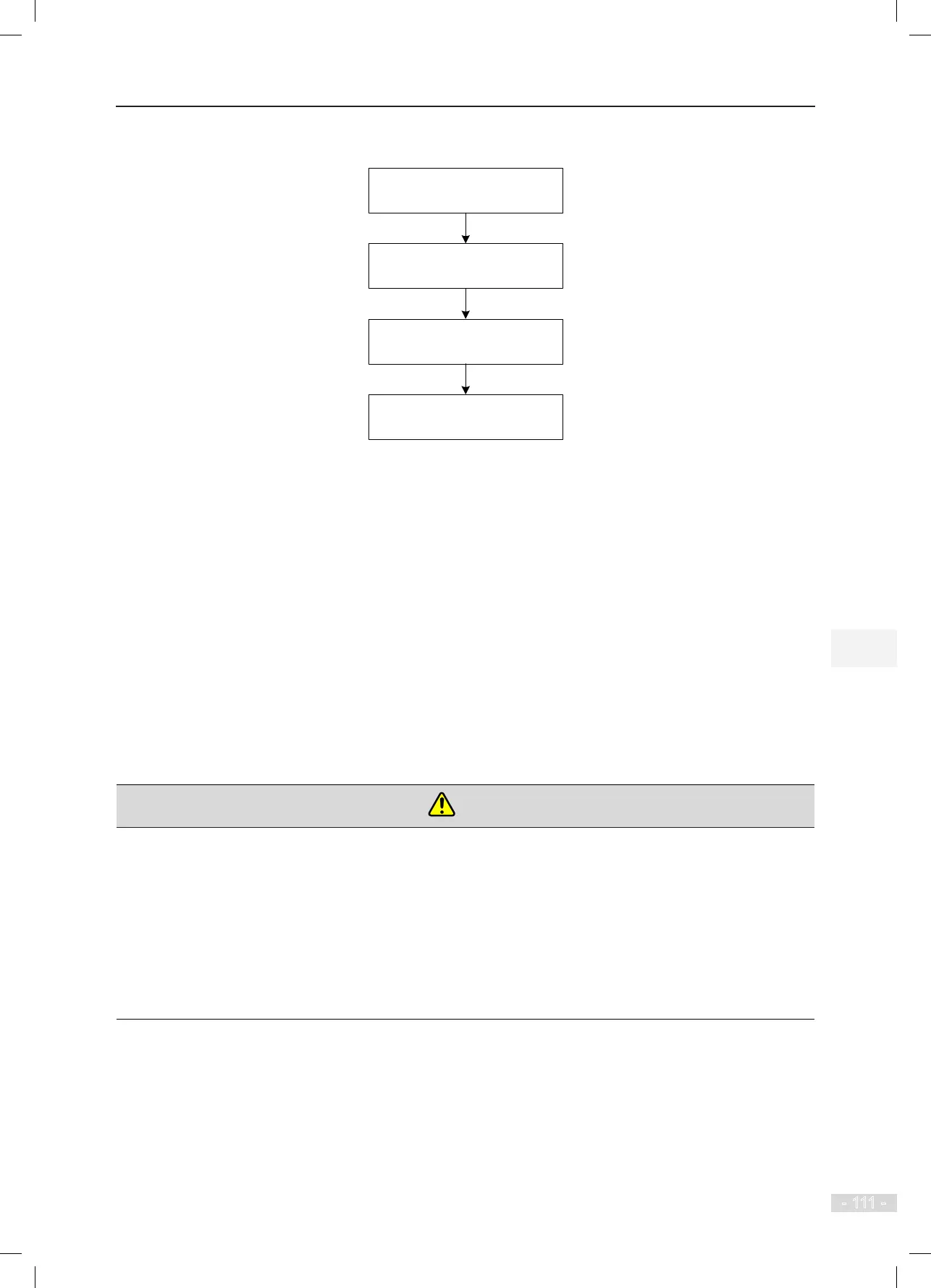NICE3000
new
User Manual
6 System Commissioning and Functions
- 111 -
Figure 6-2 Flowchart of safety and circuit check before power-on
Step 1: Check mechanical safety
Step 2: Check electrical wiring
Step 3: Check electrical safety
Step 4: Check the rotary encoder
Step 1: Check mechanical safety.
Check that the shaft is unobstructed, there is no person in the shaft, inside or on top of the car, and the
conditions for elevator safe running are met.
Step 2: Check electrical wiring.
●
The power supply R, S, T cables are wired correctly and securely.
●
The UVW cables between the controller and the motor are wired correctly and securely.
●
The controller (cabinet) and motor are grounded correctly.
●
The safety circuit is conducted, and the emergency stop buttons and switches in the cabinet and
in the equipment room can be enabled.
●
The door lock circuit is conducted. The door lock circuit is disconnected when the car door or any
hall door opens.
■
To guarantee safe running of elevator
● Short the safety circuit with caution. If the elevator starts running when the safety circuit is shorted, it will cause
serious personal injury or even death.
● Before starting commissioning, ensure that there is no person in the shaft; otherwise, it will cause personal
injury or even death.
● NEVER perform commissioning at normal speed when the safety circuit is shorted.
● NEVER short the door lock circuit during elevator startup and running. Failure to comply will result in serious
personal injury or even death.
Step 3: Check electrical safety.
●
The line voltage of the user power supply is within 380–440 VAC, and the phase unbalance
degree does not exceed 3%.
●
The total lead-in wire gauge and total switch capacity meet the requirements.
●
There is no inter-phase or to-ground short circuit in the R, S, T power supply.

